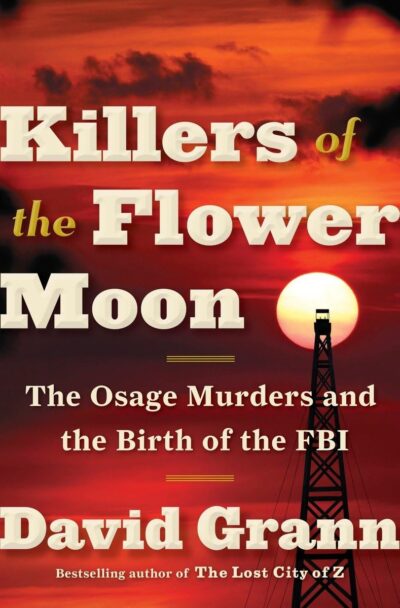testsuphomeAdmin
Stories
167
Chapters
9,217
Words
23.6 M
Comments
0
Reading
81 d, 23 h
-
 Chapter 13 introduces Tom White, a man whose upbringing was deeply rooted in the values of justice, discipline, and moral responsibility, shaped largely by his father, Robert Emmett "Emmett" White, a well-respected sheriff of Travis County, Texas, elected in 1888. The chapter transports readers back to the late 19th-century city of Austin, a place struggling with lawlessness, political tensions, and the evolving landscape of crime and justice. Through young Tom’s perspective, the narrative paints a vivid…
Chapter 13 introduces Tom White, a man whose upbringing was deeply rooted in the values of justice, discipline, and moral responsibility, shaped largely by his father, Robert Emmett "Emmett" White, a well-respected sheriff of Travis County, Texas, elected in 1888. The chapter transports readers back to the late 19th-century city of Austin, a place struggling with lawlessness, political tensions, and the evolving landscape of crime and justice. Through young Tom’s perspective, the narrative paints a vivid…-
136.8 K • Ongoing
-
-
 In September 1925, Tom White intensified his investigation into the secrets that William K. Hale and his nephews were concealing, suspecting that Bill Smith, Mollie Burkhart’s brother-in-law, had discovered something that put his life in danger. Smith’s dying words hinted at the growing conspiracy surrounding Osage oil wealth, as he believed his mother-in-law, Lizzie, had been poisoned, possibly as part of a broader scheme to eliminate Osage landowners. Before he was killed in a house explosion, Smith…
In September 1925, Tom White intensified his investigation into the secrets that William K. Hale and his nephews were concealing, suspecting that Bill Smith, Mollie Burkhart’s brother-in-law, had discovered something that put his life in danger. Smith’s dying words hinted at the growing conspiracy surrounding Osage oil wealth, as he believed his mother-in-law, Lizzie, had been poisoned, possibly as part of a broader scheme to eliminate Osage landowners. Before he was killed in a house explosion, Smith…-
136.8 K • Ongoing
-
-
 In "The Hidden Face," the chapter follows the investigation of a federal operative disguised as an insurance salesman, a tactic that ultimately unravels the layers of William Hale’s fraudulent schemes. As the operative delves deeper into Fairfax’s tangled web of corruption, a local woman confides shocking details about Hale orchestrating arson on his own land to fraudulently collect a $30,000 insurance payout. This revelation exposes Hale’s pattern of deceit and manipulation, reinforcing the extent…
In "The Hidden Face," the chapter follows the investigation of a federal operative disguised as an insurance salesman, a tactic that ultimately unravels the layers of William Hale’s fraudulent schemes. As the operative delves deeper into Fairfax’s tangled web of corruption, a local woman confides shocking details about Hale orchestrating arson on his own land to fraudulently collect a $30,000 insurance payout. This revelation exposes Hale’s pattern of deceit and manipulation, reinforcing the extent…-
136.8 K • Ongoing
-
-
 Chapter 16, "For the Betterment of the Bureau," explores the significant transformation of the Bureau of Investigation during the early 20th century under the meticulous guidance of J. Edgar Hoover and the capable leadership of Tom White. This era was marked by growing demands for justice in the face of corruption, particularly as White spearheaded the investigation into the Osage murders, despite facing immense challenges. The Osage community remained gripped by fear, with William K. Hale’s influence…
Chapter 16, "For the Betterment of the Bureau," explores the significant transformation of the Bureau of Investigation during the early 20th century under the meticulous guidance of J. Edgar Hoover and the capable leadership of Tom White. This era was marked by growing demands for justice in the face of corruption, particularly as White spearheaded the investigation into the Osage murders, despite facing immense challenges. The Osage community remained gripped by fear, with William K. Hale’s influence…-
136.8 K • Ongoing
-
-
 In Chapter 17, set in the autumn of 1925, Tom White intensified his efforts to build a solid case against William K. Hale and his accomplices, whose reign of terror had left the Osage Nation living in fear. The relentless series of murders had forced many Osage people into displacement, as they struggled to escape the invisible yet ever-present threat of being the next target. White, understanding the urgency of securing strong testimony, turned his attention to the outlaw network of Osage Hills, hoping…
In Chapter 17, set in the autumn of 1925, Tom White intensified his efforts to build a solid case against William K. Hale and his accomplices, whose reign of terror had left the Osage Nation living in fear. The relentless series of murders had forced many Osage people into displacement, as they struggled to escape the invisible yet ever-present threat of being the next target. White, understanding the urgency of securing strong testimony, turned his attention to the outlaw network of Osage Hills, hoping…-
136.8 K • Ongoing
-
-
 White and Frank Smith, driven by their relentless commitment to justice, made a crucial breakthrough in their investigation during the late 1920s when they obtained information from an imprisoned informant, Burt Lawson. In The State of the Game of criminal investigations during this period, Lawson initially claimed to have direct knowledge of the Osage murders. However, as White meticulously worked through his statements, it became clear that he had been manipulated into taking the blame for the explosion…
White and Frank Smith, driven by their relentless commitment to justice, made a crucial breakthrough in their investigation during the late 1920s when they obtained information from an imprisoned informant, Burt Lawson. In The State of the Game of criminal investigations during this period, Lawson initially claimed to have direct knowledge of the Osage murders. However, as White meticulously worked through his statements, it became clear that he had been manipulated into taking the blame for the explosion…-
136.8 K • Ongoing
-
-
 The chapter "A Traitor to His Blood" delves into the chilling betrayals and ruthless conspiracies against the Osage Nation, exposing the calculated murders designed to seize control of their oil wealth. At the center of this sinister plot is William K. Hale, a man who positioned himself as a friend and ally to the Osage while orchestrating their systematic extermination. His criminal network, which included family members and local enforcers, carried out a series of cold-blooded killings, all aimed at…
The chapter "A Traitor to His Blood" delves into the chilling betrayals and ruthless conspiracies against the Osage Nation, exposing the calculated murders designed to seize control of their oil wealth. At the center of this sinister plot is William K. Hale, a man who positioned himself as a friend and ally to the Osage while orchestrating their systematic extermination. His criminal network, which included family members and local enforcers, carried out a series of cold-blooded killings, all aimed at…-
136.8 K • Ongoing
-
-
 During the scorching summer of 1926, the city of Guthrie, Oklahoma, became the epicenter of a highly anticipated trial against William K. Hale and John Ramsey for the murder of Henry Roan. So Help You God!—a phrase echoing through the courtroom—underscored the gravity of this case, which was more than just a legal battle; it symbolized the culmination of years of violence and betrayal suffered by the Osage Nation. The Tulsa Tribune captured the significance of the moment, describing the proceedings as…
During the scorching summer of 1926, the city of Guthrie, Oklahoma, became the epicenter of a highly anticipated trial against William K. Hale and John Ramsey for the murder of Henry Roan. So Help You God!—a phrase echoing through the courtroom—underscored the gravity of this case, which was more than just a legal battle; it symbolized the culmination of years of violence and betrayal suffered by the Osage Nation. The Tulsa Tribune captured the significance of the moment, describing the proceedings as…-
136.8 K • Ongoing
-
-
 November 2, 2010—I knew we were headed for a bad night. I watched the returns come in from the Treaty Room, my usual election-night perch, Valerie and Axe and Gibbs with me. It was not the bloodbath that some had predicted—thank you, consistency!—but as the evening wore on, it was clear that we were losing the House of Representatives. By the time I went to bed, Republicans had picked up at least sixty-three seats, more than enough for a majority. To say I was discouraged would be an…
November 2, 2010—I knew we were headed for a bad night. I watched the returns come in from the Treaty Room, my usual election-night perch, Valerie and Axe and Gibbs with me. It was not the bloodbath that some had predicted—thank you, consistency!—but as the evening wore on, it was clear that we were losing the House of Representatives. By the time I went to bed, Republicans had picked up at least sixty-three seats, more than enough for a majority. To say I was discouraged would be an…-
192.4 K • Ongoing
-
-
 Chapter 14 of If These Wings Could Fly unfolds on a busy Saturday morning at the Auburn Diner, where the comforting scent of pancakes fills the air and families come together for breakfast. The protagonist reflects on her family’s deep-rooted history in Auburn, particularly the legacy of her grandfather’s construction business, which helped shape the town’s skyline and even built their home. While this legacy is significant, it also prompts the protagonist to consider the contradictions in people’s…
Chapter 14 of If These Wings Could Fly unfolds on a busy Saturday morning at the Auburn Diner, where the comforting scent of pancakes fills the air and families come together for breakfast. The protagonist reflects on her family’s deep-rooted history in Auburn, particularly the legacy of her grandfather’s construction business, which helped shape the town’s skyline and even built their home. While this legacy is significant, it also prompts the protagonist to consider the contradictions in people’s…-
387.4 K • Ongoing
-
- Previous 1 … 709 710 711 … 922 Next
